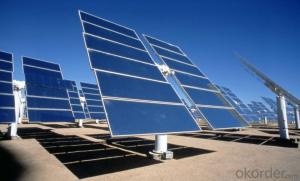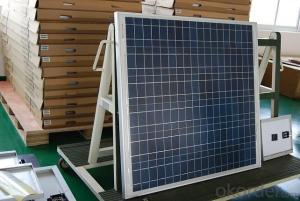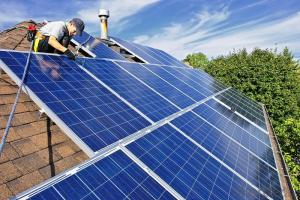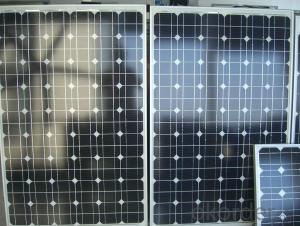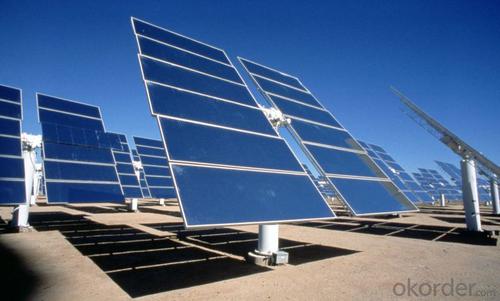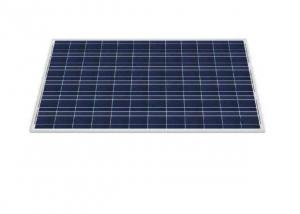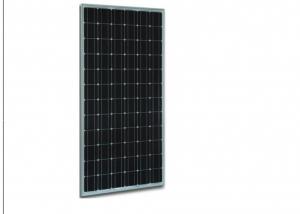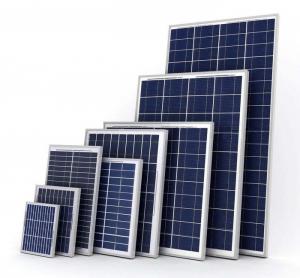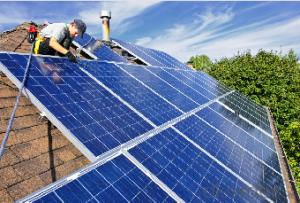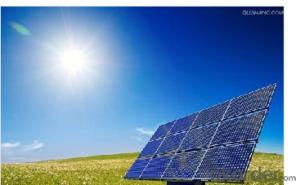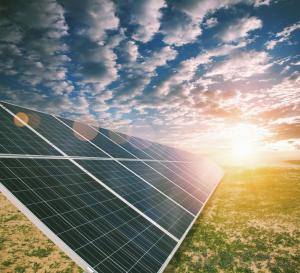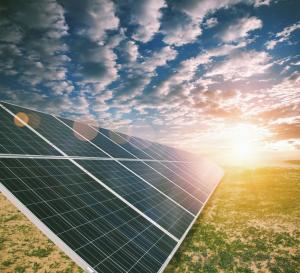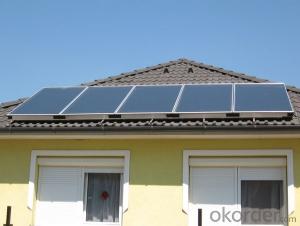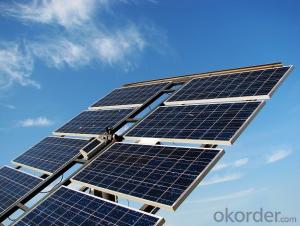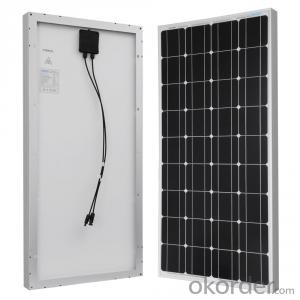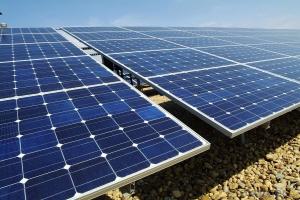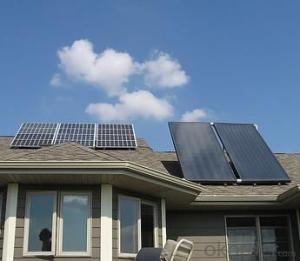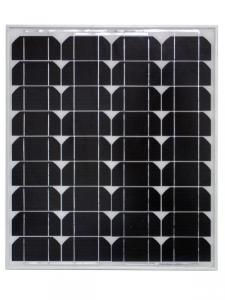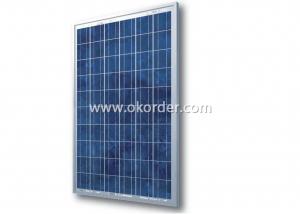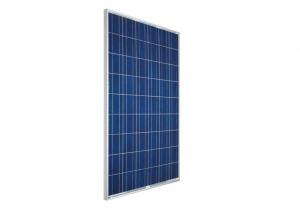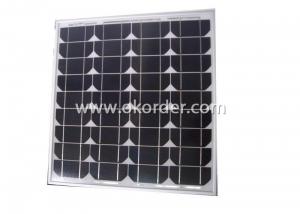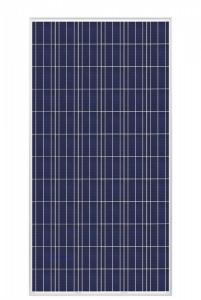New Generation High Efficiency A Grade Poly Solar Panel 200W Tire One Modules
- Loading Port:
- Shanghai
- Payment Terms:
- TT OR LC
- Min Order Qty:
- 1 watt
- Supply Capability:
- 1000000 watt/month
OKorder Service Pledge
OKorder Financial Service
You Might Also Like
Specification
China National Building Material Group Corporation
CNBM International Corporation is a professional solar panel manufacturer in China for CNBM brand . Silicon panel ( silicon module), as our main product, has high quality and good service. Our products are very popular in Europe, Australia, England, Middle East, Mexico, Argentina, Chili, Singapore and Africa.
As the whole world turns “green”, CNBM enters into the Photovoltaic Industry in 2005.After 6 years' fast growth, now our annual capacity is 500MW solar panel and 500MW solar cell.

Features of our products:
• High conversion efficiency mono/poly-crystalline amorphous silicon solar cells
• Modules incorporate high performance bypass diodes to minimize the power drop caused by shading
• High transmittance, low-iron tempered glass
• High performance EVA encapsulant to prevent destroying and water.
• AI frame: without screw, corner connection. 8 holes on the frame can be installed easily
• Good performance of preventing from atrocious weather such as wind and hails
• Certifications: CE IEC TUV VDE UL, Class I
• 10 years 90% power output warranty
Characteristics of Monocrystalline Silicon Solar Panel
I Solar Cell : High efficiency crystalline solar cell. Even if under the weak light, the solar module can produce maximum power output.
II Tempered glass (toughened glass): Anti-reflecting coating and high transmission rate glass increase the power output and mechanical strength of solar module.
III EVA and TPT: Using high quality EVA and TPT to prevent destroying and water.
IV AI frame: Without screw, corner connection. 6 holes on the frame can be installed easily.
V Junction box: Multi function junction box with water proof.
VI Long lifetime: ≥25 years; Less power decrease.
VII Good performance of preventing from atrocious weather such as wind and hails.
Standard Test Conditions of Monocrystalline Silicon Solar Panel
The opto-electrical specifications shown below are stabilized values being measured at Standard Test Conditions, Irradiance: 1000W/m2, Spectrum: AM1.5 at 25°C, The info below is subject to manufacturing tolerances. Where appropriate minutes of measurement are available and are used for the dimensioning of the installation.
The MODULES, including, without limitation, any defects in the MODULES, or from use or installation. Under no circumstances shall CNBM SOLAR be liable for three articles as follows:
1) Client requires compensating the damage caused by above reasons
2) The third party requires client compensating the damage
3)Special, Incidental or indirect damages, or any consequential economic loss (including profit, saving, tax, transportation charge or installing loss etc.), even if CNBM SOLAR has been notified the possibility of happening these damage or loss.
FAQ
We have organized several common questions for our clients,may help you sincerely:
①What price for each watt?
It depends on the quantity, delivery date and payment terms,
②What is your size for each module? Can you tell me the Parameter of your module?
We have different series of panels in different output, both c-Si and a-Si. Please take the specification sheet for your reference.
③Can you provide the peripheral products of the solar panels, such as the battery, controller, and inverter? If so, can you tell me how do they match each other?
Yes, we can, we have two companies for solar region, one is CNBM International, the other is CNBM engineering Co.
We can provide you not only the solar module but also the off grid solar system, we can also provide you service with on grid plant.
④What is your warranty system?
Our product performance guarantees for 25 years
• 12 years guarantee for workmanship
• Timeliness of delivery
• Quality Products certified (TÜV, UL, CE, ISO)
- Q: Can solar panels be installed on a boat or yacht?
- Yes, solar panels can be installed on boats or yachts. In fact, they are becoming increasingly popular as a source of renewable energy for marine vessels. Solar panels can provide power for various onboard systems, such as lighting, electronics, and refrigeration, reducing the reliance on generators or shore power. Additionally, solar panels are lightweight, durable, and can be easily installed on the deck or roof of a boat or yacht, making them a practical and efficient choice for harnessing clean energy at sea.
- Q: Can solar panels be installed on public parks or gardens?
- Yes, solar panels can be installed on public parks or gardens. In fact, it is becoming increasingly common to see solar panels integrated into the design of these spaces. Installing solar panels in public parks and gardens can help generate clean energy, reduce carbon emissions, and provide shade and shelter for visitors.
- Q: Can solar panels be installed on factories or industrial buildings?
- Yes, solar panels can be installed on factories or industrial buildings. In fact, it is quite common for large-scale solar installations to be implemented on such structures, as they often have expansive rooftops or open spaces suitable for maximizing solar energy generation. Installing solar panels on factories or industrial buildings can help offset power consumption, reduce carbon emissions, and provide a sustainable source of energy for these facilities.
- Q: what is needed beside the panels and do you need an electrician to hook it up
- The main components for a solar electric system are the panels, racks for mounting the panels, and inverter to convert the panel's DC power to AC, which can be pumped into the grid if necessary. There would also be various electrical supplies involved - wire, conduit, possibly a switch and/or circuit breaker. On the paperwork side, there's a building permit, permission from the power company to connect, and some inspections. Although it could be done by a homeowner, it's not a trivial project, and the best way to get it set up is to contract a professional solar installer. They all give free quotes, and can explain your various options when they visit.
- Q: Can solar panels be installed on forests or protected areas?
- Solar panels can be installed on forests or protected areas, but it is important to carefully consider the potential environmental impact and sustainability of such installations. Proper planning and assessment should be conducted to determine the potential disturbance to ecosystems, wildlife habitats, and biodiversity. In some cases, it may be more appropriate to explore alternative locations or prioritize the use of existing infrastructure for solar panel installations.
- Q: How do solar panels affect the property's community engagement?
- Solar panels can have a positive impact on a property's community engagement by promoting sustainable practices and sparking conversations about renewable energy. Solar panels serve as a visible symbol of a property's commitment to reducing carbon emissions and reliance on fossil fuels, which can inspire and encourage others in the community to adopt similar eco-friendly practices. Additionally, solar panels can be used as an educational tool, offering opportunities for community members to learn about solar energy and its benefits, fostering a sense of environmental awareness and collective action.
- Q: I was looking at thin flexible solar panels as solar panels 500w a option to upgrade a 20w solar panel I have permanently mounted to the roof of a home made camper van.Why I was thinking flexible is at just 2mm thin they can be glued down and being flexible they will follow the contour of the rounded shape of the roof of my camper (boxy standard solar panel spoils the lines a little)Another reason is no glass to brake when traveling on dirt tracks(though I am surprised mine hasn't broken yet after thousands of km on corrugated dirt roads). Finally there is a weight saving at only /3 the weight or less then a standard glass panel.There are different grades of flex PV some of the more expensive ones are very flexible with extremely thin backing at around .5mm The ones I was looking at are cheaper and at around 2mm with a thin flexible aluminum backing.$250 is about the going rate for 20w OKorder job. Below is a pic of a smaller one 60w or so.Has anyone had any experience with them?
- but it's very interesting and I wanted to ask you. In your case this is good solution, but I saw flexible panels in OKorder much cheaper than 250$. This is the price of standard solar panel 20w. Maybe your panels with better efficiency? I know that flexible panels are less than half efficient than regular panels, thats why you need twise more area to get the same output. What is your usage of this energy in this van? I know there are many ideas of solar cars, but if this solution is efficent enough today? Thanks!
- Q: Installing solar panels requires a big initial investment. Before I make this investment I want to check to see if the money I will save by installing solar panels will actually pay for this investment, in the long run. To calculate my savings, we should consider the area (square feet) I currently have available to install solar panels. Look at the available sunlight and its intensity in my state each month of the year. Based on this data estimate how much energy my solar panel will generate. Then compare that with how much energy (kWh) I currently consume based on my electricity bill.
- Only by doing the calculations (figuring out how much you electricity bill is per month now and calculate how much time it will take to get to the figure of your solar panels. Don't forget to add a couple of percentage points per year higher(since when has electrical costs gone down)? and do the addition. That is when you will pay off the solar panels, as their power is free.
- Q: Can solar panels be installed on oil or gas facilities?
- Yes, solar panels can be installed on oil or gas facilities. This is known as hybrid energy systems, where solar panels are integrated with traditional fossil fuel facilities to generate electricity. This combination allows for the diversification of energy sources, reducing reliance on traditional fuels and minimizing carbon emissions. Additionally, solar panels can help offset the energy consumption of oil or gas facilities, making them more sustainable and environmentally friendly.
Send your message to us
New Generation High Efficiency A Grade Poly Solar Panel 200W Tire One Modules
- Loading Port:
- Shanghai
- Payment Terms:
- TT OR LC
- Min Order Qty:
- 1 watt
- Supply Capability:
- 1000000 watt/month
OKorder Service Pledge
OKorder Financial Service
Similar products
Hot products
Hot Searches
Related keywords
